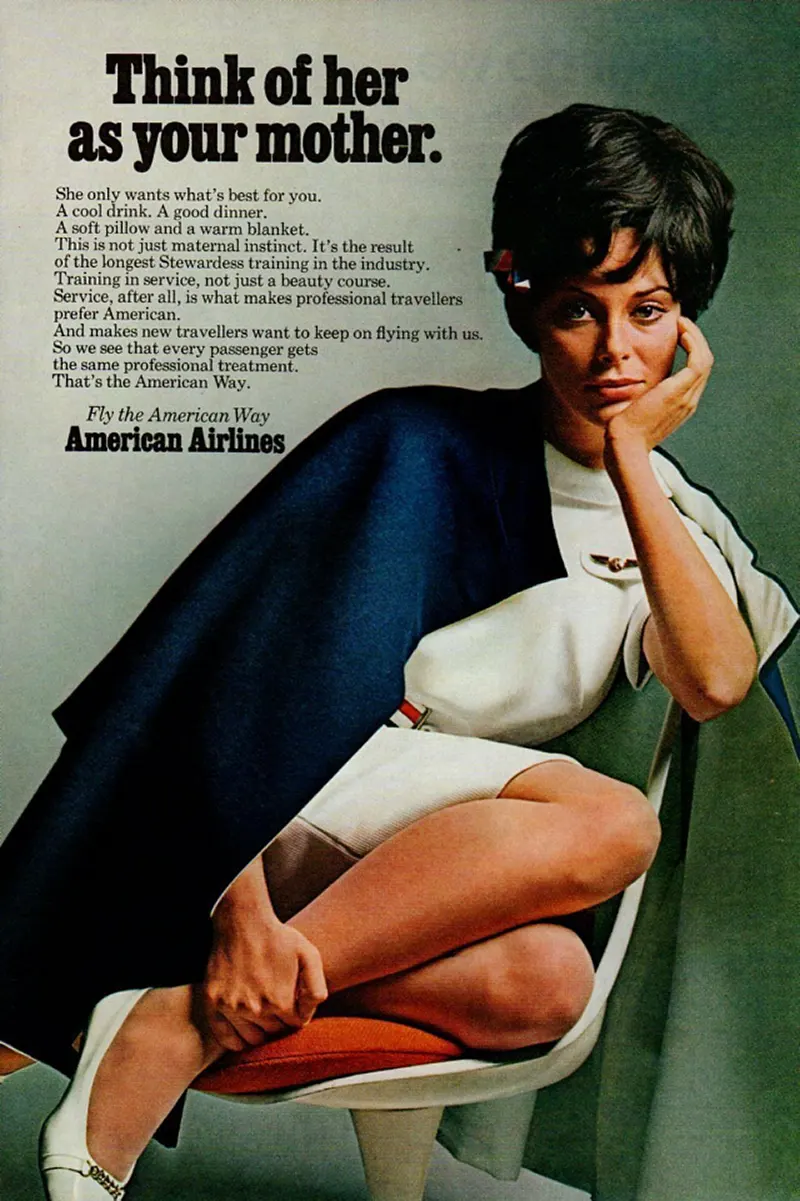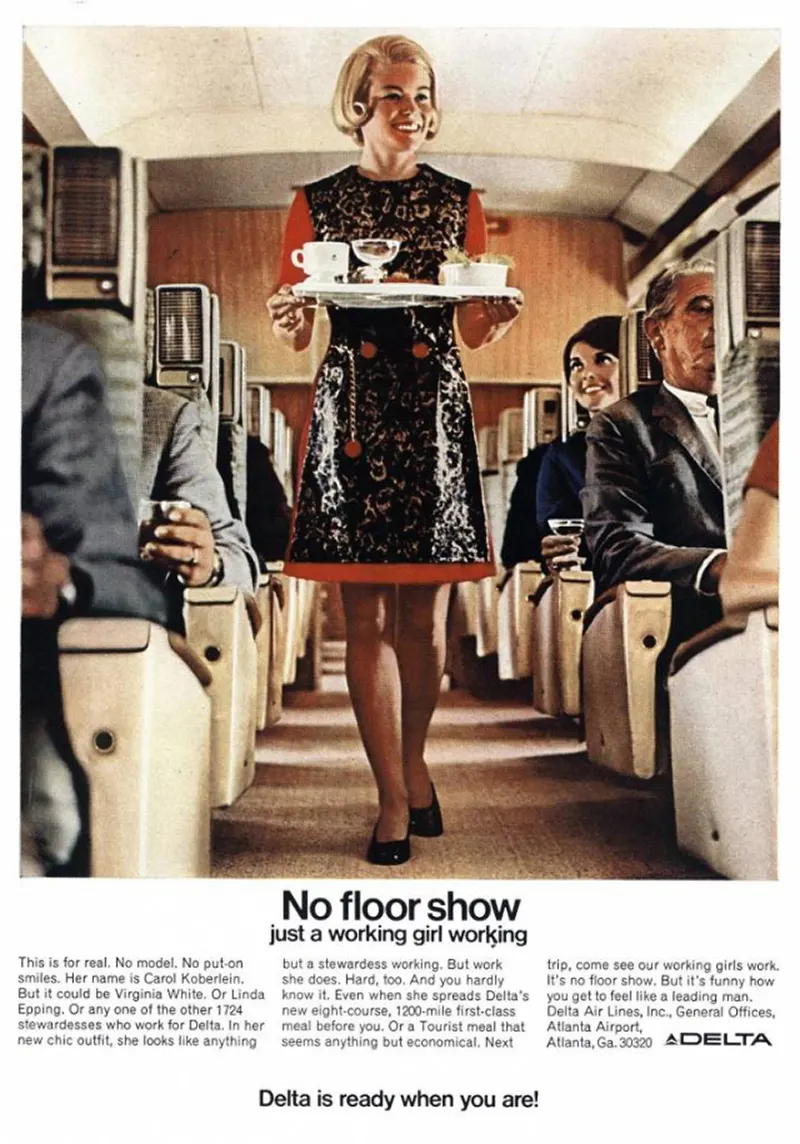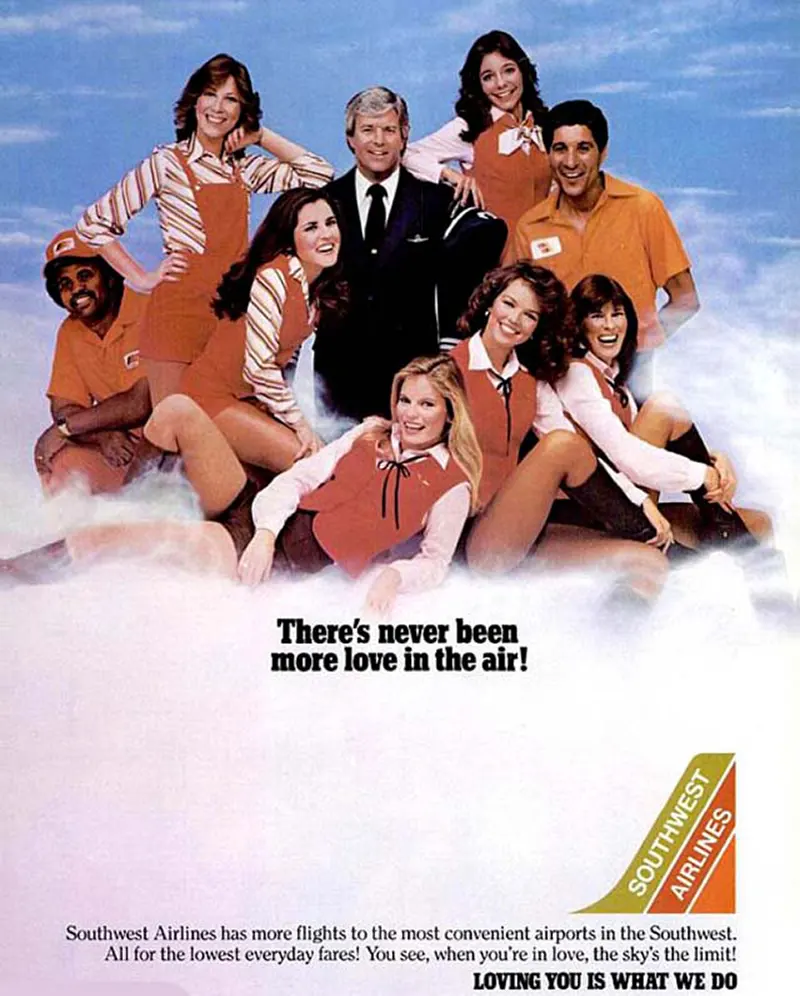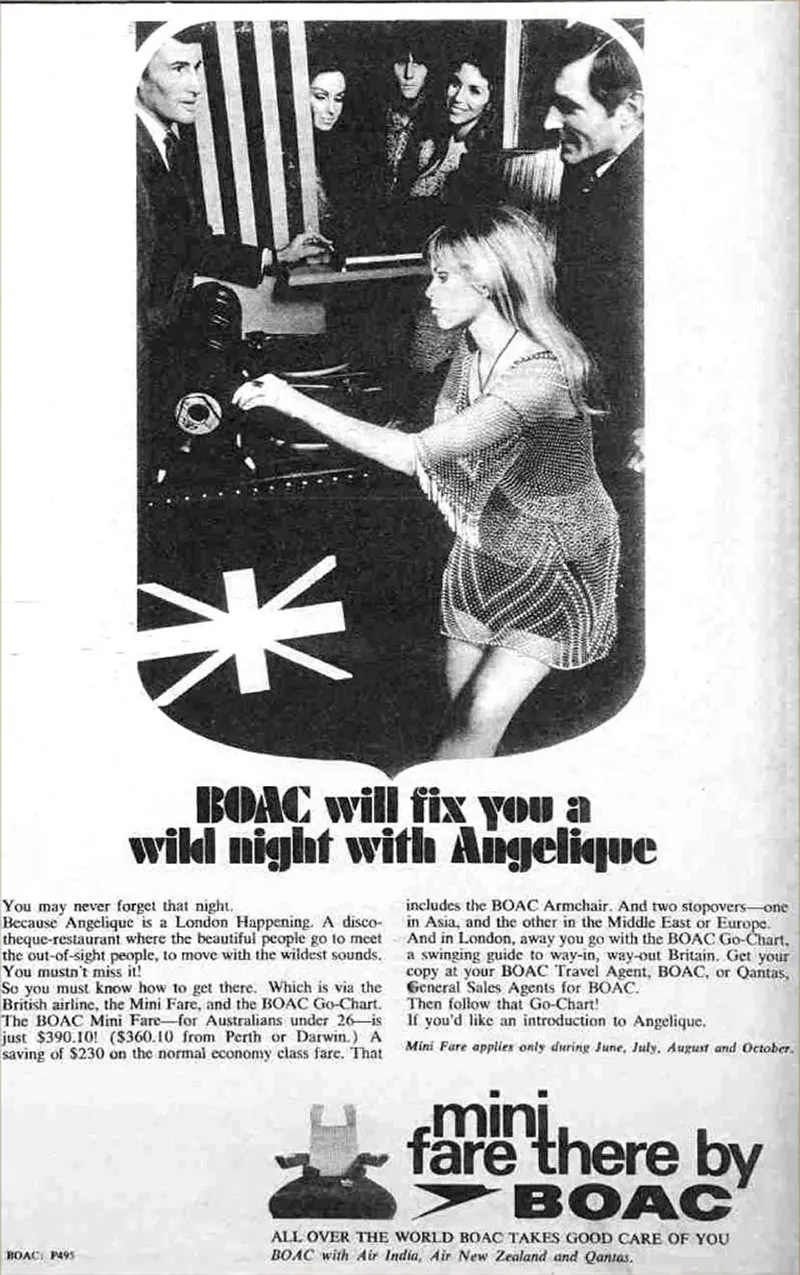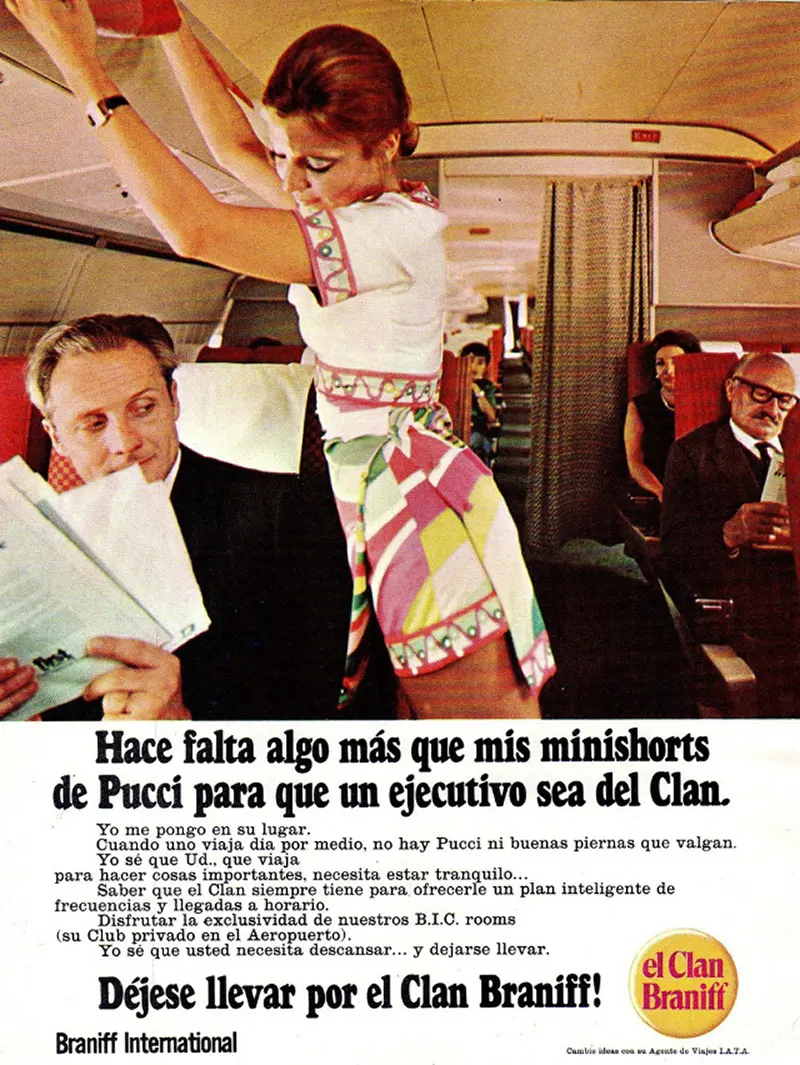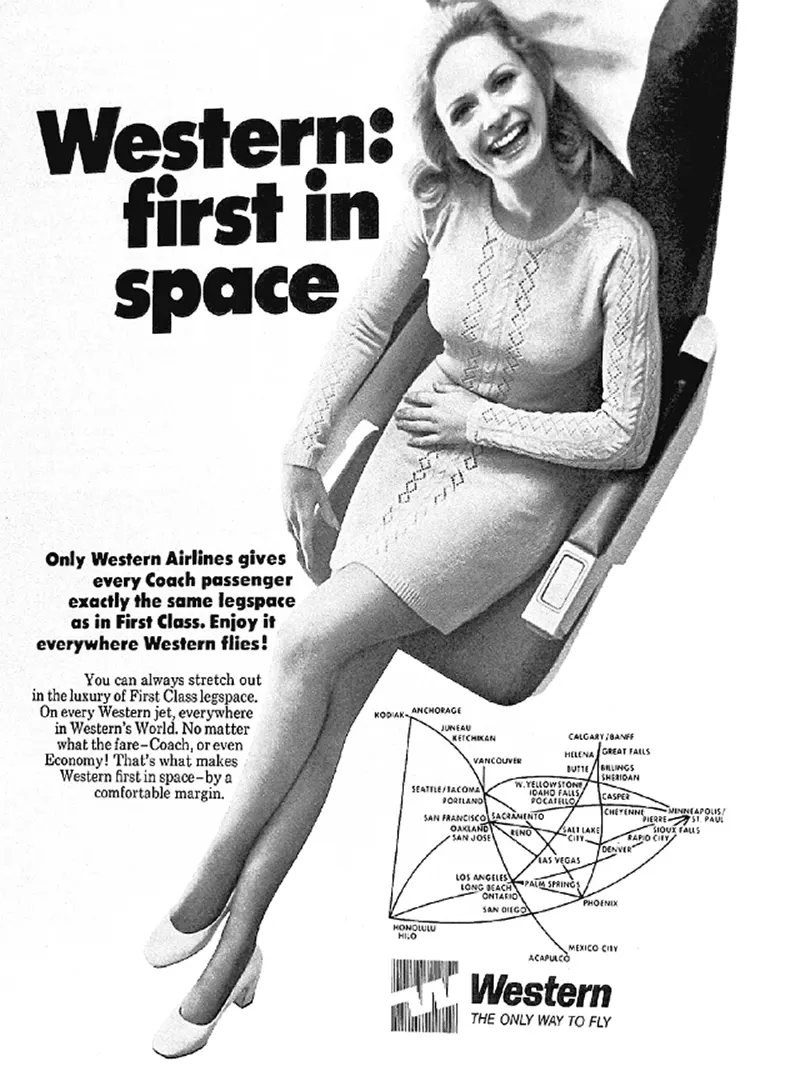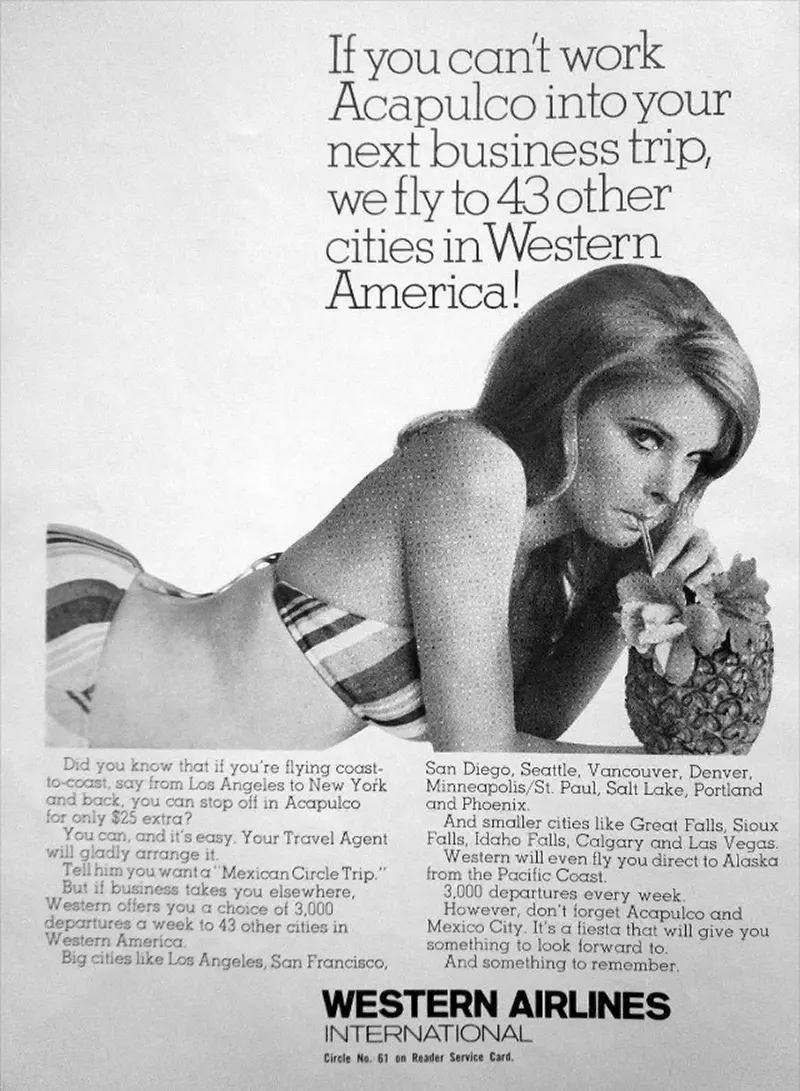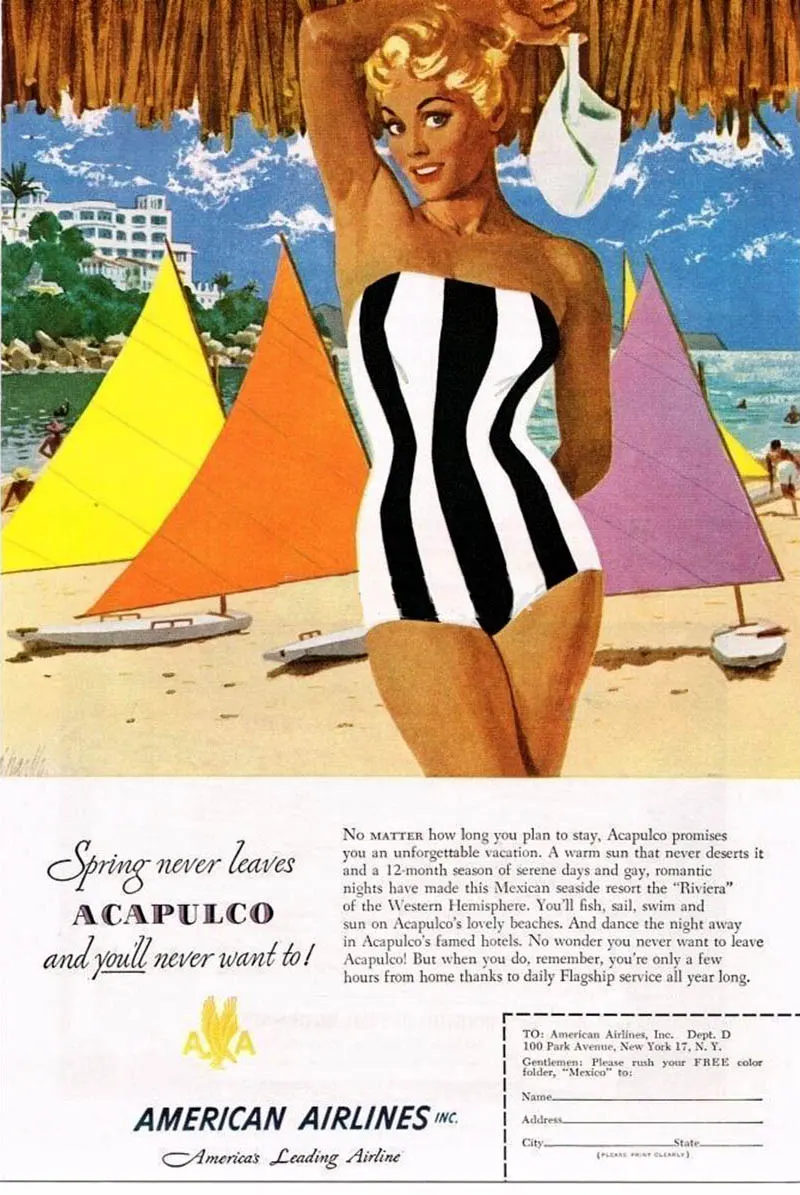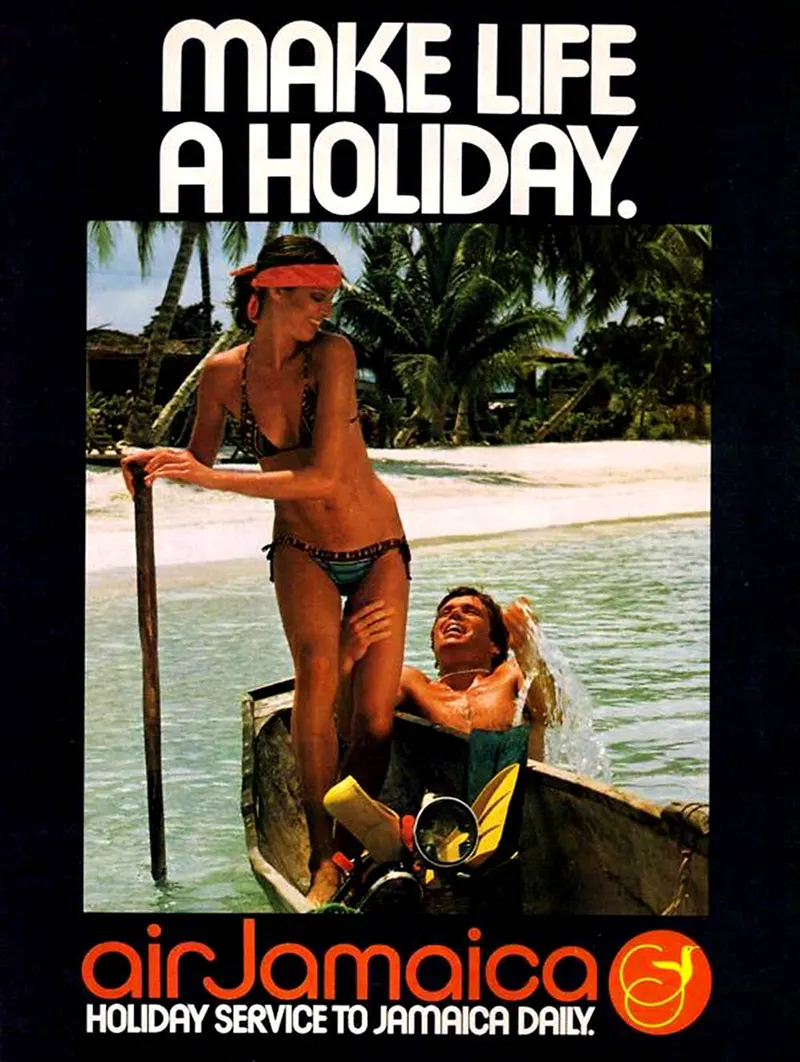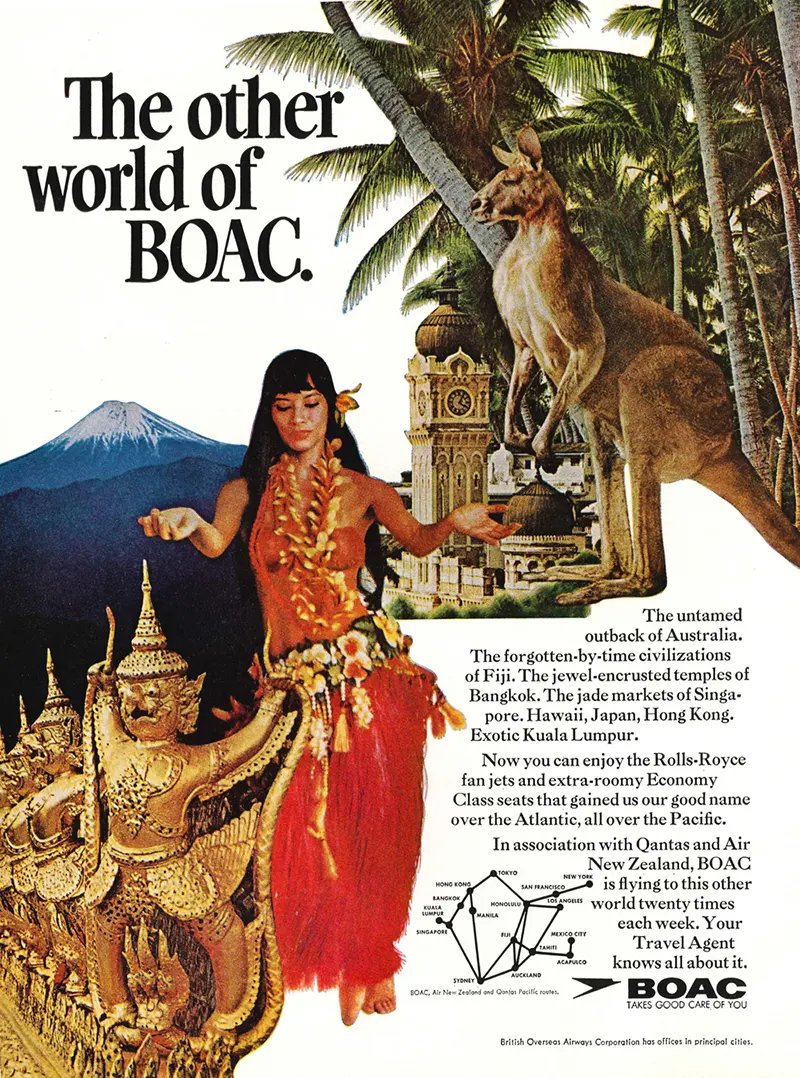While “sex sells” is one of those universally-known truths that just seem so obvious, there are studies that show that it’s not always the case. However, sex in airline advertising was used heavily during the 1960s and 1970s in a push to attract the men clientele. (Also worth checking: A photographic historical look at the sexy stewardesses of the 1960s-1980s). Surprisingly using this idea of “sex sells” began as early as even 1871. An advertisement for Pearl Tobacco included a naked woman in the print ad. Then in 1885 W. Duke & Sons took notice of their competitors’ increased revenue and they run the same strategy by including sexually provocative trading cards in their cigarette packs. Due to this, the company grew into the leading cigarette brand at the time. Early in the 1900′s, soap companies used this strategy of “dirty” fun in their advertisements. Pears Soap’s famous poster of an attractive witch, riding a broomstick naked, was first seen in 1899. Again, this did not promote the soap in any way other than using a beautiful woman to boost sales. Sexual images in advertising were becoming very common after the post-war and advertisers began trying something new, something to stimulate the brain in a different way. Sexual innuendoes started popping up in ads to create a different effect in peoples’ minds. A sexual image was not thrown at them, just a slogan or saying that could be looked at in two different ways: the literal meaning, and the sexual meaning. This was up to people to imagine and to figure out where their dirty minds could take them. Ads continued to get sexier and sexier, particularly in the fashion world, with the majority of advertisements that featured women in any way presenting them as sex objects. One study looking at advertising in the 1960s and 1980s found that while the number of ads featuring or alluding to sex didn’t necessarily go up, they did become a lot more overt, unambiguous, and visual. According to research, sexually appealing content, such as imagery, used for marketing does not need to pertain to the product or service in question. Rather, such content is utilized as an attempt to shape or shift brand image held by the consumer. As more companies have adopted the ad strategy of “sex sells”, the prevalence of sexual campaigns has led to controversy. Consumers in society have voiced concern over the techniques and content used for titillating audiences, often stemming from the fact that such ads challenge conventional morals and cultural standards. Research into evolution explains the use of sex in advertising and the differences between genders with different mating strategies. It is the biological prerogative of the male to reproduce with as many females as possible, as this increases his chances of producing offspring. Because of this need to reproduce as much as possible, males search for cues which signal females are available and accessible, such as seductive behavior, as well as cues that indicate good health, including facial symmetry, shiny hair and firm breasts. Evolutionary research into female sex strategies show that women are more concerned about long-term prospects and mates’ resources, and less interested in typical male requirements of good health and accessibility. This explains why sexually explicit adverts tend to be directed at male consumers, whereas products aimed at a female market typically involve romantic imagery and males who are wealthy, intelligent, or powerful. The use of sex in advertising has been criticized for its tendency to reinforce sexist stereotypes. Since the late 1970s, many researchers have determined that advertisements depict women as having less social power than men, but the ways in which women are displayed as less powerful than men have evolved over time. In modern times, advertisements have displayed women’s expanding roles in the professional realm and importance in business backgrounds. However, as this change occurred there has been a substantial increase in the number of images that showcase women as less sexually powerful than men and as objects of men’s desire. Furthermore, sex in advertising has been criticized for its emphasis on the importance of physical attractiveness and role as mate. This emphasis has led men and women to value intelligence and general skills less. The rise in awareness of sexism portrayed in these types of adverts has led to stricter advertising policies. One group that enforces these rules is the Advertising Women of New York association. Adverts using highly sexual images containing nudity and unrealistic physiques can lead to self-objectification. In turn, this can lead to shame, disgust, appearance anxiety, eating disorders, and depression. The increase in self-objectification caused by the use of sex in advertising has been found in women and men. The latter is not surprising with the increased sexual portrayal of men in advertising.
(Photo credit: The Atlantic / Daily News UK / Flickr / Pinterest / Wikimedia Commons / Britannica). Notify me of new posts by email.
Δ Subscribe


